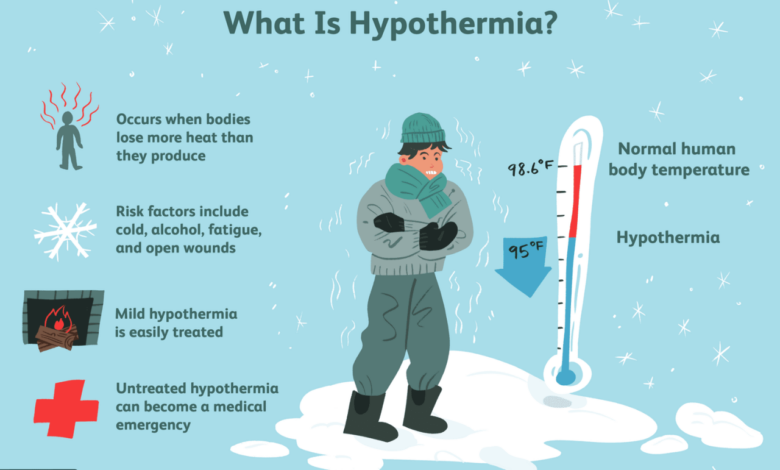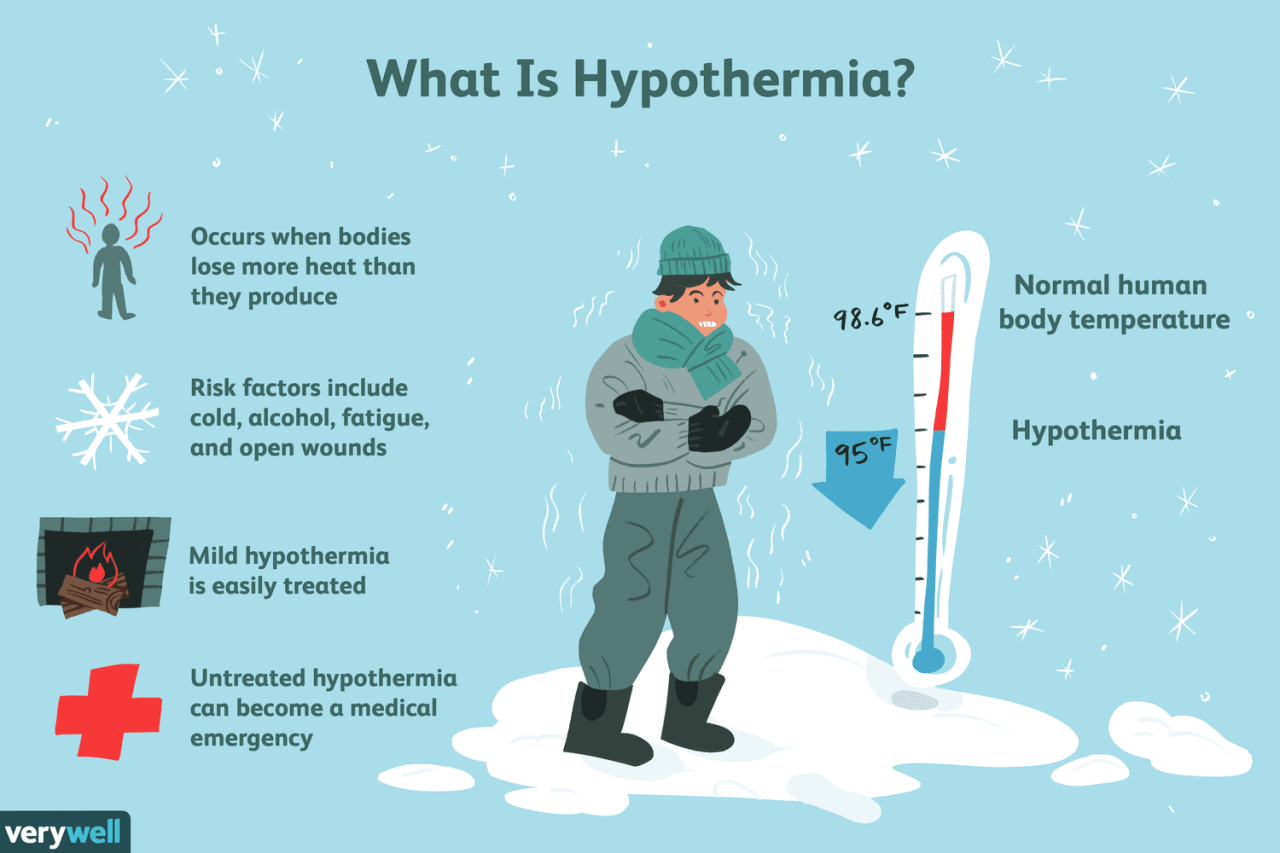
How to Deal with Hypothermia: A Guide to Staying Safe
How to deal with hypothermia takes center stage, a topic that often sparks fear and confusion. Hypothermia, the dangerous condition of abnormally low body temperature, can sneak up on you, especially in cold weather. It’s a condition that requires understanding, awareness, and swift action.
This guide will equip you with the knowledge you need to recognize the signs, provide first aid, and prevent this potentially life-threatening situation.
From the chilling grip of winter storms to the unexpected dip in temperature during outdoor adventures, hypothermia can strike anyone. Understanding the physiological mechanisms behind this condition is crucial, as it helps us identify the risk factors and develop effective prevention strategies.
We’ll explore the different stages of hypothermia, the warning signs that shouldn’t be ignored, and the immediate steps to take if someone is experiencing hypothermia.
First Aid for Hypothermia

Hypothermia is a serious condition that occurs when your body temperature drops below 95 degrees Fahrenheit (35 degrees Celsius). It can be caused by exposure to cold weather, water, or wind. If you suspect someone is suffering from hypothermia, it’s crucial to take immediate action to warm them up and seek medical attention.
Steps to Take, How to deal with hypothermia
The first step is to move the person out of the cold environment and into a warm place. If possible, remove any wet clothing and replace it with dry, warm clothing. The goal is to help the person’s body temperature rise gradually.
- Remove Wet Clothing:Wet clothing conducts heat away from the body, making hypothermia worse. Remove any wet clothing as quickly as possible and replace it with dry, warm clothing.
- Provide Dry, Warm Clothing:Cover the person with blankets, sleeping bags, or any other warm materials you have available.
If possible, use a warm, dry towel to wrap around the person’s head and neck.
- Warm Beverages:If the person is conscious and able to swallow, give them warm (not hot) beverages, such as tea, coffee, or broth. Avoid giving them alcohol or caffeine, as these can actually worsen hypothermia.
- Warm Compresses:Apply warm compresses to the person’s armpits, groin, and neck. These areas have a lot of blood vessels, which can help to warm the body more quickly.
- Seek Medical Attention:Call 911 or your local emergency number immediately. Hypothermia is a serious condition that can lead to death if not treated promptly.
Final Review: How To Deal With Hypothermia
Knowing how to deal with hypothermia is vital for anyone who ventures into cold environments. By understanding the risks, recognizing the symptoms, and knowing the appropriate first aid measures, you can make a difference in a potentially life-threatening situation.
Remember, prevention is key, so dress warmly, stay hydrated, and be aware of the dangers of cold weather. Stay safe, and never hesitate to seek medical attention if you suspect someone is suffering from hypothermia.
Hypothermia can be a dangerous condition, so it’s important to know how to deal with it. One way to prevent hypothermia is to dress in layers, and always have a warm hat and gloves handy. If you find yourself in a situation where you’re exposed to cold temperatures for an extended period, it’s important to seek shelter and warm up as quickly as possible.
Learning how to deal with hypothermia can be a timeless resolution, just like fine art making timeless resolutions. Taking steps to stay safe and healthy can be a valuable lifelong practice, and it’s a good idea to brush up on your knowledge of hypothermia prevention and treatment so you’re prepared for any situation.
Hypothermia can be a serious condition, so it’s crucial to act quickly if you suspect someone is suffering from it. Warm them up gradually, offering warm drinks and blankets. It’s also important to address the underlying cause of the cold.
Sometimes, stress or negative self-talk can contribute to feeling cold, both physically and emotionally. Learning to shift your self-talk around food, as outlined in this helpful article on positive ways to shift your self talk around food , can help you feel more in control and empowered, which can also improve your ability to regulate your body temperature.
Remember, a positive mindset can be a powerful tool in managing both physical and emotional challenges, including dealing with hypothermia.
Hypothermia can be dangerous, but even a little bit of movement can help raise your body temperature. If you find yourself in a cold environment, try to stay active and get your blood flowing. Even small bursts of exercise can make a difference, and you’ll be surprised how much better you’ll feel.
If you’re not sure how to get started, check out this article on how short bursts of exercise can benefit your health. Remember, staying warm is crucial, so don’t hesitate to seek shelter and stay safe.

